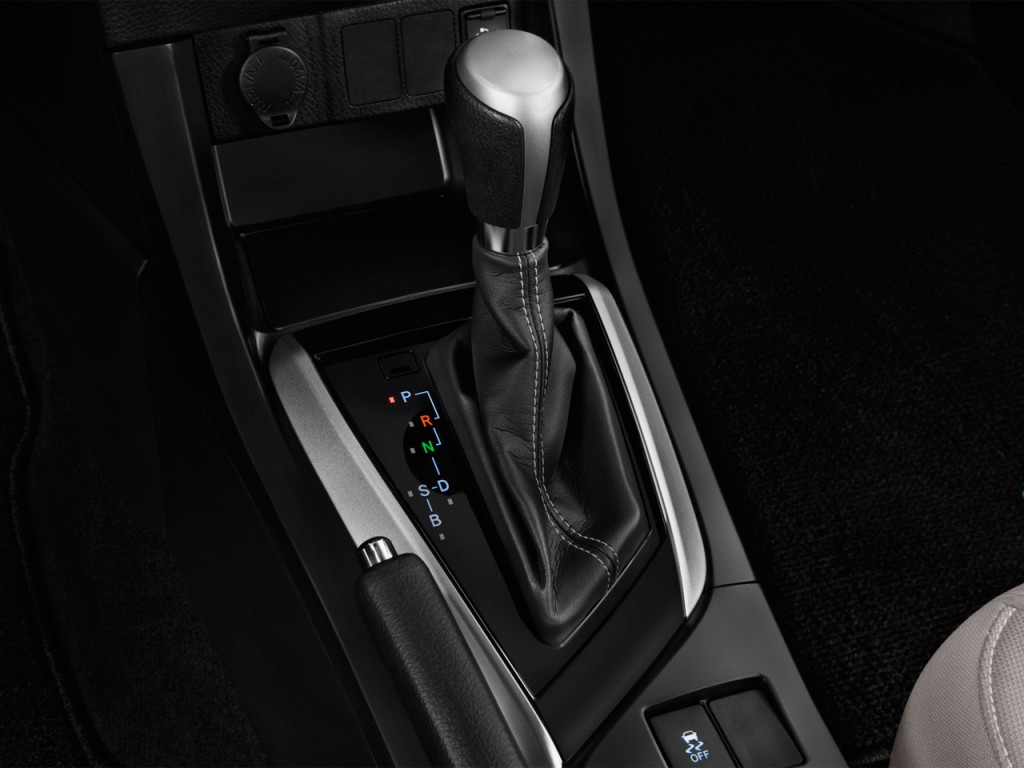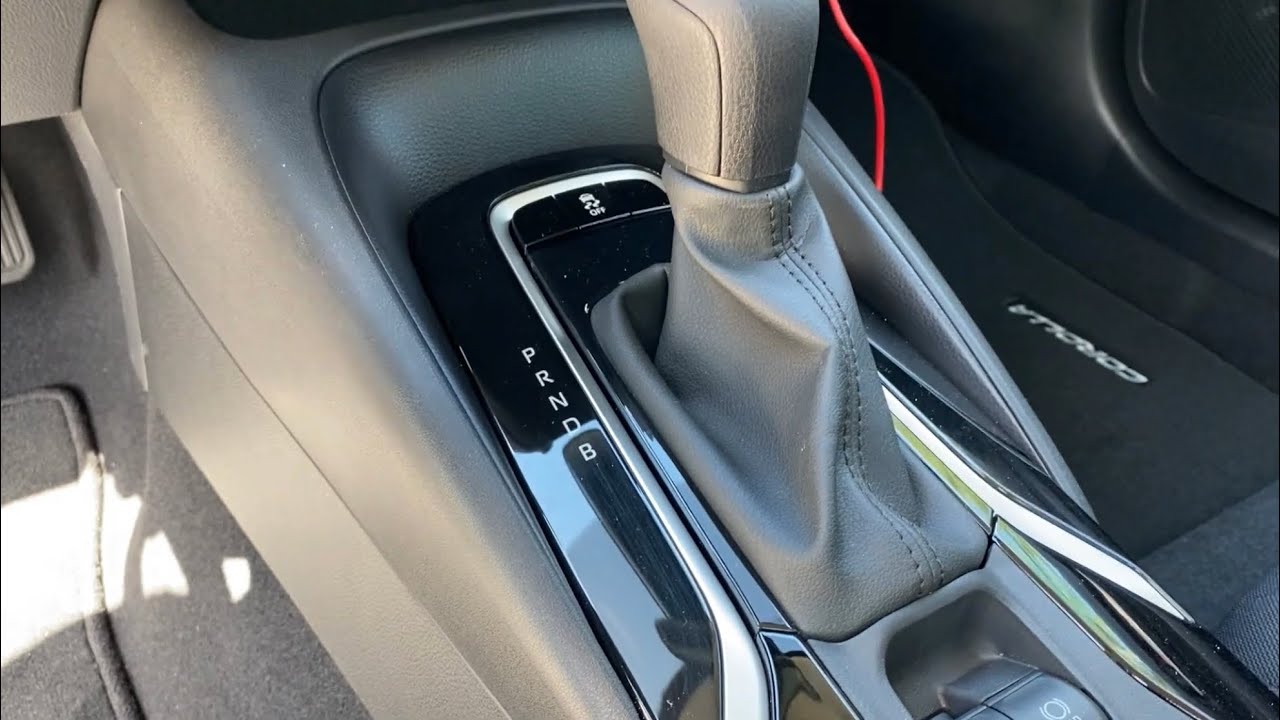“B” on an automatic gearbox stands for “engine braking” or “low gear.” When you shift to “B,” the transmission holds the gears longer, providing more engine braking on downhill slopes.
It’s useful for controlling speed without using the brakes excessively. Unlike “Drive” (D), which prioritizes fuel efficiency and smoother driving, “B” enhances engine braking, particularly beneficial when descending hills or navigating steep terrains.
While not all cars have a “B” mode, understanding its purpose can help optimize your driving experience, especially in specific conditions where better control and reduced speed are essential, such as downhill descents.
Automatic Transmission Basics

Automatic transmissions are intricate systems that manage a vehicle’s gear ratios without manual intervention.
Unlike manual transmissions, automatics use a torque converter to transmit power from the engine to the transmission. This allows for seamless gear changes without the need for a clutch pedal.
The transmission’s primary components include the torque converter, planetary gearsets, and hydraulic controls. Understanding these components helps drivers grasp the complexity of automatic transmission operation.
Different Gears (P, R, N, D) and Their Functions
| Gear | Function |
| P (Park) | Engages a mechanical lock, preventing vehicle movement |
| R (Reverse) | Enables backward vehicle movement |
| N (Neutral) | Disconnects engine from wheels for free rolling |
| D (Drive) | Engages forward drive, shifts gears based on speed |
What is the purpose of the ‘B’ mode in automatic gearboxes?
Automatic transmissions typically offer various driving modes to accommodate different scenarios, and ‘B’ mode, also known as engine braking or low gear, serves a specific purpose in optimizing vehicle performance.
Enhanced Engine Braking
‘B’ mode is designed to enhance engine braking, a mechanism where the engine assists in slowing down the vehicle. This is achieved by holding the gears longer, utilizing the resistance generated by the engine to control speed.
Downhill Driving
One of the primary applications of ‘B’ mode is during downhill driving. When descending slopes, the engine braking effect helps in preventing the vehicle from gaining excessive speed. This is particularly beneficial when driving on steep or winding roads.
Improved Control
By engaging ‘B’ mode, drivers gain better control over the vehicle’s speed without relying solely on the brakes. This can be advantageous in situations where frequent or prolonged braking might lead to brake fade.
Optimal Performance in Specific Conditions
‘B’ mode is not intended for everyday driving but rather for specific conditions where controlled speed reduction is crucial. It ensures optimal performance when navigating challenging terrains, providing a balance between efficiency and safety.
Energy Recuperation
In some modern vehicles, ‘B’ mode may also contribute to energy recuperation during braking. The extended use of engine braking can generate additional energy, which may be harnessed to recharge the vehicle’s battery in hybrid or electric vehicles.
Driver Preference
Some drivers prefer using ‘B’ mode in stop-and-go traffic or urban driving, as the enhanced engine braking can reduce the need for frequent acceleration and deceleration, potentially improving overall fuel efficiency.
Not a Universal Feature
It’s important to note that ‘B’ mode is not universally available in all automatic transmissions. Its presence and functionality may vary among different vehicle models and manufacturers.
What Are The Benefits of Using “B” Mode?

Using “B” mode in your car offers benefits like improved slowing down when you lift off the gas pedal, making it handy when going downhill or coming to a stop.
It gives you better control on slopes and can enhance overall performance, especially in situations like towing or driving in heavy traffic.
Improved Engine Braking
Engaging the “B” mode increases engine braking, slowing down the vehicle when lifting off the accelerator. This feature is especially useful when descending slopes or approaching traffic stops.
Unlike traditional automatic transmission modes, “B” mode restricts the transmission from upshifting, harnessing the engine’s resistance to decelerate the vehicle more efficiently.
Enhanced Control on Downhill Slopes
“B” mode provides drivers with better control when navigating downhill terrains. The increased engine braking minimizes the reliance on the brake pedal, reducing the risk of brake overheating and maintaining a controlled descent.
This feature is advantageous in mountainous or hilly regions, where maintaining a steady speed downhill is crucial for both safety and fuel efficiency.
Optimal Performance in Certain Driving Conditions
In specific driving scenarios, such as towing heavy loads or driving in stop-and-go traffic, utilizing “B” mode can enhance the vehicle’s overall performance and responsiveness.
By optimizing the power delivery and allowing the engine to work more effectively in challenging conditions, drivers can experience improved efficiency and responsiveness, contributing to a smoother driving experience.
How does the ‘B’ mode differ from other gears in an automatic gearbox?
In an automatic gearbox, the “B” mode, or engine braking mode, stands apart from other gears due to its unique functionality:
Prioritizing Engine Braking
While traditional gears like “D” (Drive) prioritize forward motion, “B” mode emphasizes engine braking. It restricts the gearbox from upshifting, leveraging the engine’s resistance to slow down the vehicle when the accelerator is released.
This contrasts with “D” mode, where the transmission aims to upshift quickly to maximize fuel efficiency and maintain a smoother driving experience.
Restriction on Upshifts
Unlike gears such as “D” or “L” (Low), which allow the transmission to shift gears freely, “B” mode prevents the gearbox from upshifting too quickly. This deliberate restriction ensures that the engine continues to provide significant resistance for effective braking.
The limited upshifting is particularly advantageous when navigating downhill slopes or approaching situations where controlled deceleration is essential.
Optimal for Specific Driving Scenarios
“B” mode is specifically designed for certain driving conditions. It shines in situations like descending steep inclines or when additional engine braking is desired for improved control.
This mode offers a versatile approach, making it suitable for scenarios where enhanced engine braking and control are prioritized over rapid acceleration.
FAQ
What is the B mode on a gear shift?
The “B” mode on a gear shift, commonly found in automatic transmissions, stands for engine braking. When engaged, it utilizes the engine’s resistance to slow down the vehicle, particularly useful when descending slopes or requiring additional control.
What is B and S in an automatic car?
In automatic cars, “B” typically signifies engine braking mode, as explained earlier. On the other hand, “S” often represents a Sport mode, enhancing performance by allowing the transmission to hold gears longer, providing a more dynamic driving experience.
What is the difference between D and B in an automatic?
The primary difference between “D” (Drive) and “B” (Engine Braking) in an automatic transmission lies in their focus on acceleration and deceleration, respectively. “D” is for regular driving, while “B” emphasizes engine braking and controlled slowing down.
Should I drive in D or B?
The choice between “D” and “B” depends on the driving conditions. “D” is suitable for regular driving, optimizing fuel efficiency, while “B” is useful for enhanced engine braking, especially on downhill slopes or when additional control is needed.
Can you shift from B to D while driving?
In most automatic transmissions, it is generally safe to shift from “B” to “D” while driving. However, it’s recommended to make the shift smoothly and be aware of the vehicle’s response to ensure a seamless transition.
What are the 3, 2, 1 gears for in an automatic?
The “3,” “2,” and “1” gears in an automatic transmission provide manual control over the gears. “3” limits the transmission to the first three gears, “2” to the first two gears, and “1” to the first gear, offering more control in challenging driving conditions or when towing.
Is it okay to shift an automatic while driving?
While it’s generally not necessary to manually shift an automatic transmission, some cars provide a manual mode. Shifting manually while driving is acceptable in these cases, but it’s essential to understand the vehicle’s capabilities and follow manufacturer guidelines to avoid damage.
Final thoughts
To sum up, knowing the meaning of “B” on an automatic gearbox unveils its special features like improved engine braking, better control on slopes, and optimized performance in specific driving scenarios.
Whether you’re going downhill or need more control, using “B” mode can be really helpful. While it might not be necessary all the time, trying out “B” mode when needed can make your driving experience safer and more controlled.

